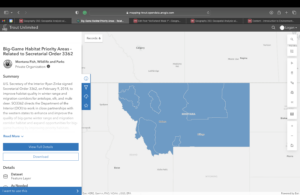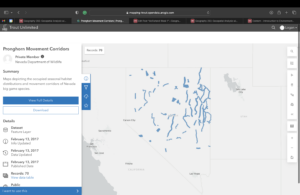For my first app I created a story map with an interactive map of the Big Island Wilderness Area in the upper peninsula of Michigan. I took a trip there over the summer and created this to give a description of what the trip was like for any other fishermen considering the trip. This corresponds to the second chapter of the book on creating interactive story maps.
https://arcg.is/TOfCf
The second app that I created utilized the WebApp builder to create a 3d representation of the populations of each county in Ohio. This relates to the chapter 7 section on making 3d maps. The added bonus to it being made with the WebApp builder is that it has a cleaner presentation and can be more easily shared. Applications are broad for this app, but I made it with people who are considering moving to ohio in mind, and when moving to a new state people often take county population into account.
https://owugis.maps.arcgis.com/apps/webappviewer3d/index.html?id=ec26f7f24eed407782934ab95de1ddf9



 A
A